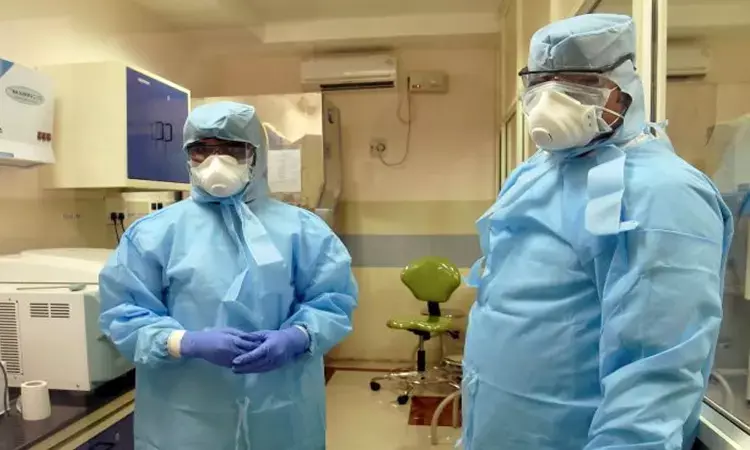- Home
- Medical news & Guidelines
- Anesthesiology
- Cardiology and CTVS
- Critical Care
- Dentistry
- Dermatology
- Diabetes and Endocrinology
- ENT
- Gastroenterology
- Medicine
- Nephrology
- Neurology
- Obstretics-Gynaecology
- Oncology
- Ophthalmology
- Orthopaedics
- Pediatrics-Neonatology
- Psychiatry
- Pulmonology
- Radiology
- Surgery
- Urology
- Laboratory Medicine
- Diet
- Nursing
- Paramedical
- Physiotherapy
- Health news
- Fact Check
- Bone Health Fact Check
- Brain Health Fact Check
- Cancer Related Fact Check
- Child Care Fact Check
- Dental and oral health fact check
- Diabetes and metabolic health fact check
- Diet and Nutrition Fact Check
- Eye and ENT Care Fact Check
- Fitness fact check
- Gut health fact check
- Heart health fact check
- Kidney health fact check
- Medical education fact check
- Men's health fact check
- Respiratory fact check
- Skin and hair care fact check
- Vaccine and Immunization fact check
- Women's health fact check
- AYUSH
- State News
- Andaman and Nicobar Islands
- Andhra Pradesh
- Arunachal Pradesh
- Assam
- Bihar
- Chandigarh
- Chattisgarh
- Dadra and Nagar Haveli
- Daman and Diu
- Delhi
- Goa
- Gujarat
- Haryana
- Himachal Pradesh
- Jammu & Kashmir
- Jharkhand
- Karnataka
- Kerala
- Ladakh
- Lakshadweep
- Madhya Pradesh
- Maharashtra
- Manipur
- Meghalaya
- Mizoram
- Nagaland
- Odisha
- Puducherry
- Punjab
- Rajasthan
- Sikkim
- Tamil Nadu
- Telangana
- Tripura
- Uttar Pradesh
- Uttrakhand
- West Bengal
- Medical Education
- Industry
20 existing, 22 potential coronavirus hotspots in India: Union Health Ministry

"Although there is no evidence to widespread community transmission, 20 existing and 22 potential hotspots have been identified. The containment measures to break the cycle of transmission and clinical management of those affected would require large human resource," it said in the document.
New Delhi: The Union Health Ministry on Thursday said it has identified 20 existing and 22 potential hotspots of COVID-19 in the country and asserted that although there is no evidence of widespread community transmission, containment measures will require large human resource.
The ministry said this in an advisory on human resource management of COVID-19 to provide guidance to the states on manpower that can be mobilized for the management of the disease along with possible role assignments and their training requirements.
Read Also: Dialysis in COVID – 19 patients: Union Health Ministry releases guidelines
"Although there is no evidence to widespread community transmission, 20 existing and 22 potential hotspots have been identified. The containment measures to break the cycle of transmission and clinical management of those affected would require large human resource," it said in the document.
The advisory stressed on capacity building, saying identified human resource needs to be trained online using online training programs developed by the ministry.
The training for different target groups shall cover areas like field surveillance, contact tracing, sampling, packaging and shipment of specimen, hospital infection prevention and control, including use of appropriate PPEs and biomedical waste management, clinical case management including ventilator management, training on managing quarantine and isolation facilities and community based training in pyscho social care, the document said.
The ministry advised states to identify and designate a nodal officer for training who will coordinate all these activities.
For COVID-19 management, it advised the district administration to pool-in the requisite human resources who would stay in the containment zone till such operations are over.
"For isolation areas, in addition to training, all hospital staff, dentists and AYUSH practitioners available should also be trained. Retired doctors and other healthcare professionals should be identified to work in non-COVID areas in hospitals in case of emergencies," the advisory stated.
For surveillance activities, the ministry said COVID Warriors @ 1 per 250 population may be identified and trained.
It stated quarantine facilities are meant to house asymptomatic cases and the number identified and trained manpower should be equal to the number of COVID Warriors.
The advisory highlights major areas where enhanced deployment of human resource is required such as surveillance activities at grass root level, supervisory management of containment operations, laboratory testing and clinical management of suspect/confirmed cases in isolation wards.
It also listed out critical care management of Severe Acute Respiratory Infection (SARI) cases in ICUs, patient transportation and referral, cleaning, disinfection and waste management, management of quarantine, isolation facilities and pyscho-social care as some of the important areas.
Medical Dialogues Bureau consists of a team of passionate medical/scientific writers, led by doctors and healthcare researchers. Our team efforts to bring you updated and timely news about the important happenings of the medical and healthcare sector. Our editorial team can be reached at editorial@medicaldialogues.in.


